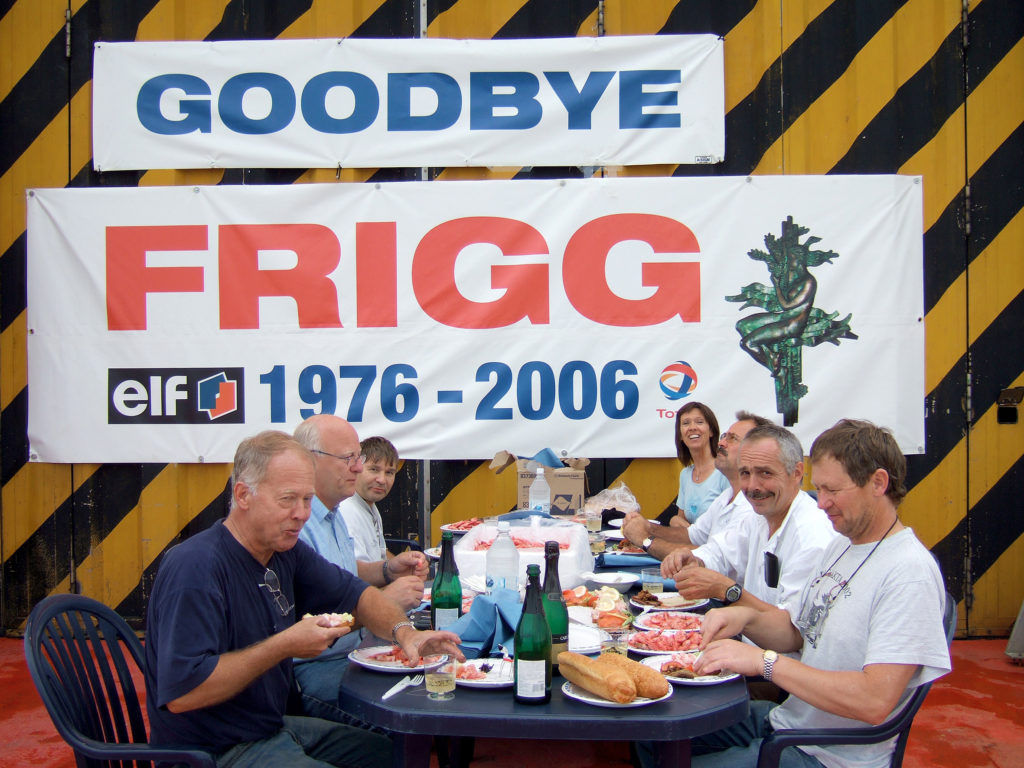Farewell to Frigg

When the field was on plateau in the 1980s, it delivered almost 18 billion cubic metres per year to Britain and accounted for more than a third of the country’s gas needs for households and industry.
After the wells had been plugged and abandoned, removal and clean-up work continued. The cessation plan, approved by the Norwegian government in 2004 and the British the year before, specified that everything would be cleaned up and removed apart from the gravity base structures for CDP1, TP1 and TCP2. These concrete giants would remain standing as memorials to the gas field. Saipem 7000, the world’s largest crane vessel, was to lift and remove the topside modules to be broken up and re-used. A total of 20 000 tonnes was to be shipped to Shetland, with the remaining 65 000 tonnes being taken to Aker Stord south of Bergen for breaking up and recycling. The whole removal operation is due to be completed in 2012.
During the demolition phase, the Frigg workforce was gradually reduced. A consortium comprising Aker Kvaerner Offshore Partner, Saipem, Shetland Decommissioning Company and Aker Stord handled the actual removal job.
The last Frigg employees left the field on 21 July 2006. “Sad,” commented field manager Christian Idsøe. The departure was celebrated on the helideck with fresh prawns, non-alcoholic champagne and a song by Norwegian troubadour Øystein Sunde ” Any last orders” – as background music. The curtain was rung down on what a lot of people felt had been a good workplace for many years.

